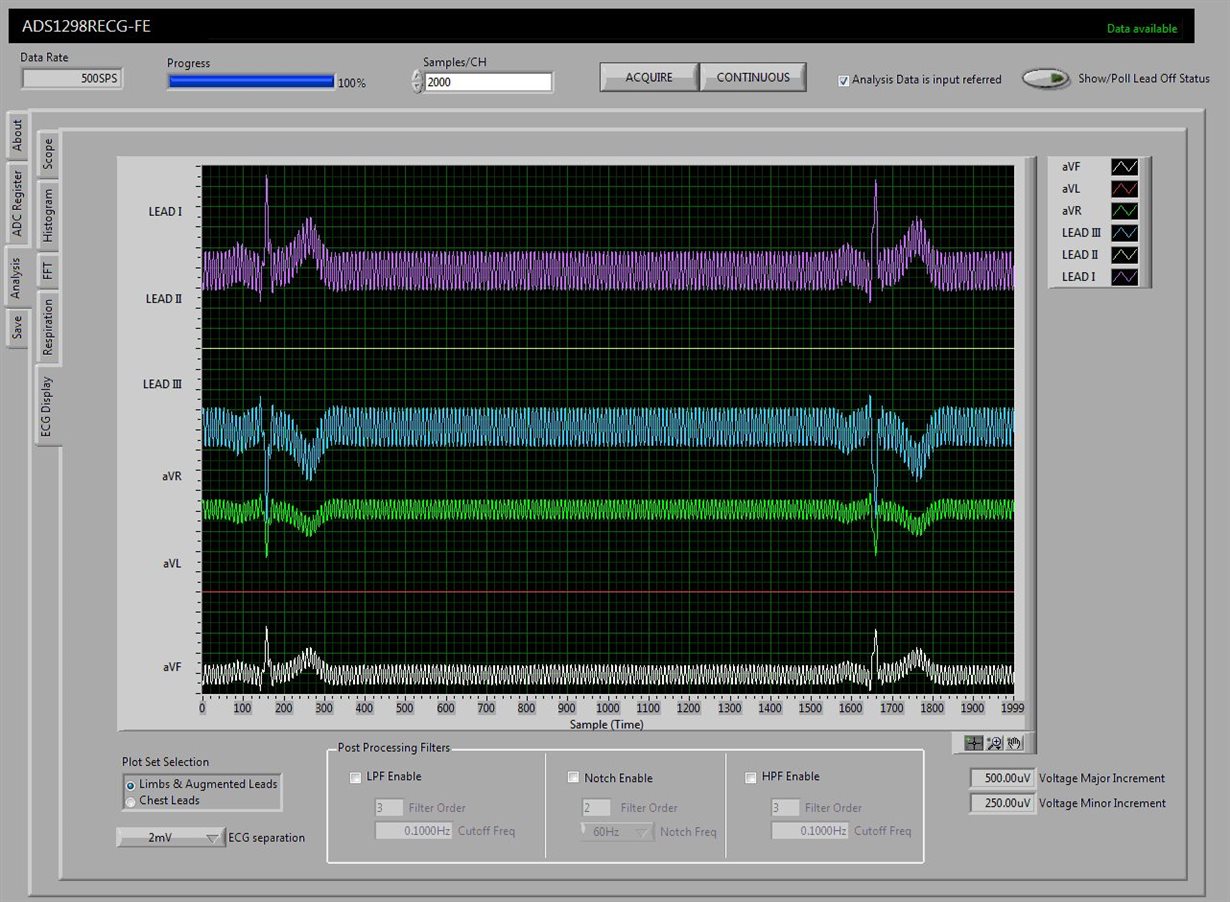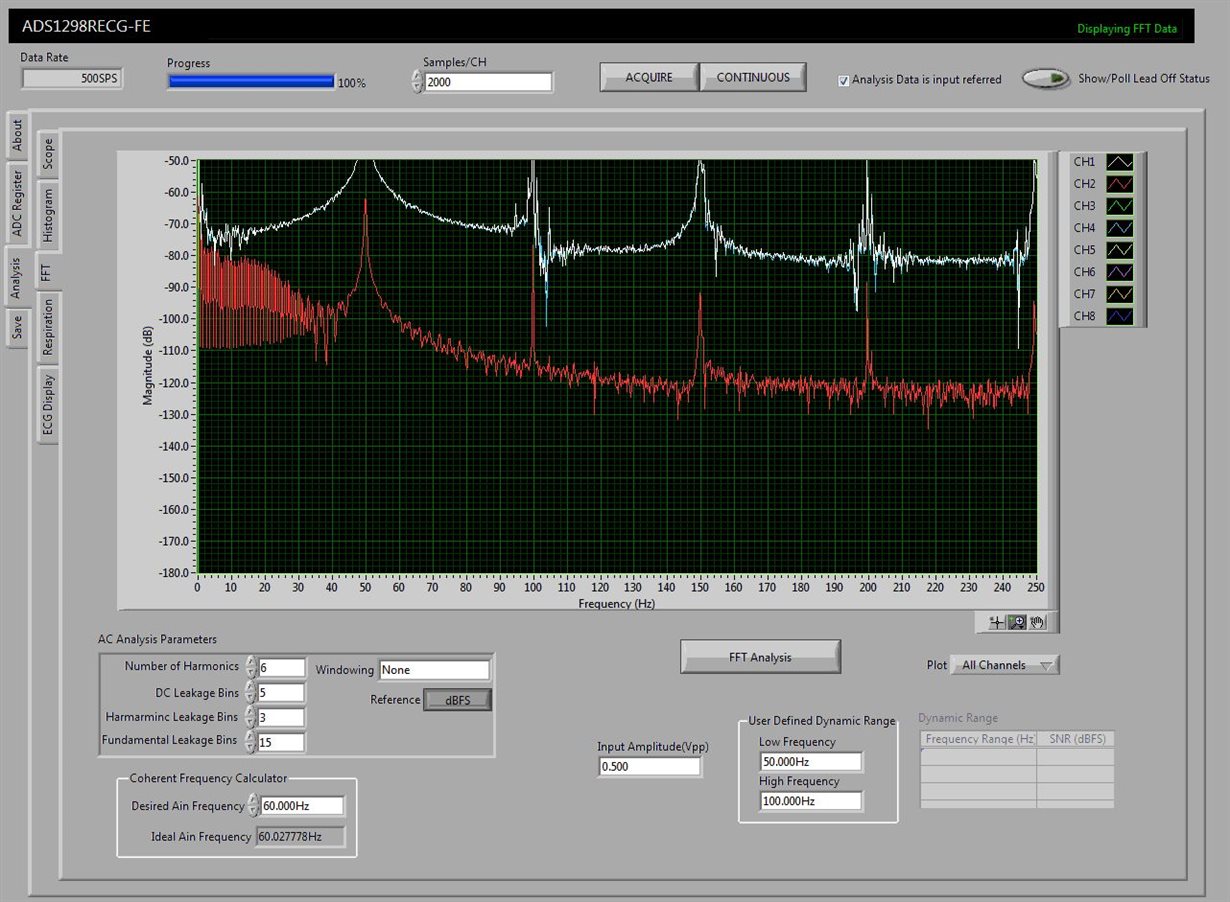Other Parts Discussed in Thread: ADS1298, ADS1298R
Hello,
I am using ADS1298 for 12 lead ECG measurement.
The front-end circuit design of the ECG on our custom board is done with reference to the development board circuit of ADS1298R.
We have tested the custom board with the ECG simulator and the waveforms are satisfactory , similar to the waveforms captured on development board. But when the same board is connected to human body we are not able to get any waveforms.
We are getting only noise.
We have tested the ADS1298R reference board on human body and the observation is similar. We are getting noise there as well.
Can somebody please help with this problem ?
Please let me know if you need more details on this.






